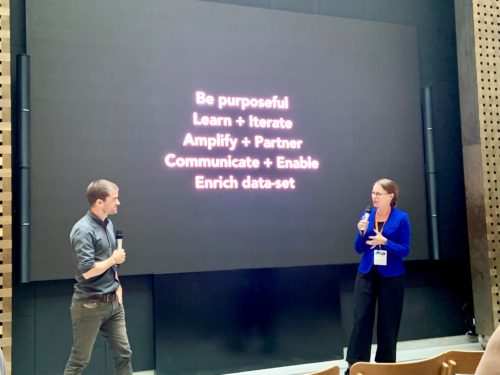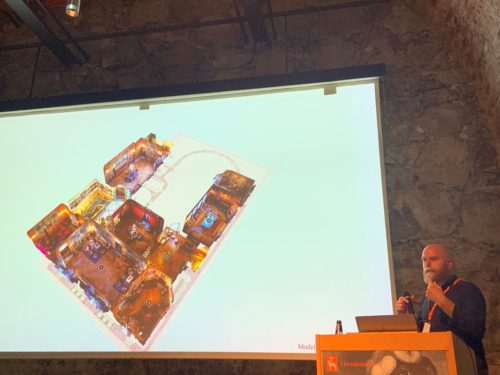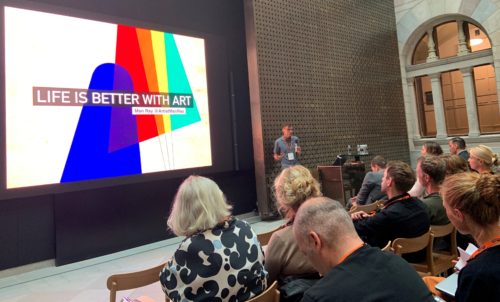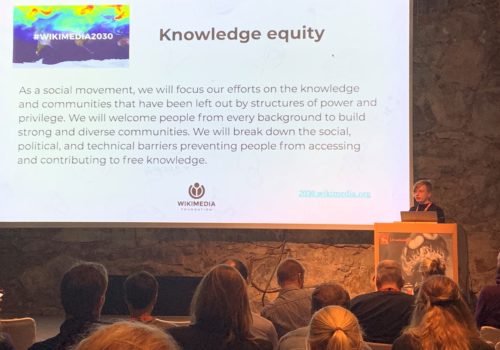A review of the 2019 Stockholm edition of the Sharing is Caring conference.
Sharing is Caring is a conference series on open cultural heritage data. Since the first event brought together professionals from all across Europe in Copenhagen in 2011, extensions have taken place in several European cities. On 16 and 17 September 2019, the Nationalmuseum and the Royal Armoury organised the event in Stockholm with the theme “Open Data – now what? Applying principles of openness and collaboration in strategy and practice“. The learning and insights gained during these two days can be valuable pieces of advice for the sector, shared and discussed by colleagues from around the world. Let me share my personal top 5 with you.
Your data is your core value
Whatever you or others want to create from your data, from curated content on your institution’s website or social media channels to Virtual Reality experiences based on your 3D models: It all depends on the quality and licensing of your data. You can start small and learn as you go – but prepare for working continuously on your data. As Loic Tallon, former CDO of the Metropolitan Museum, put it: “Do the fundamentals brilliantly.“ Your data will never be perfect (it simply can’t with technology evolving and standards shifting) – but if you prioritise your data quality and sharing with open licenses over a growing number of platforms and media, your overall success in reaching your defined goals will increase.

Sharing can lead to your data’s success where you didn’t suspect it
Several speakers shared amazing examples on success and creative re-use of their data where they had not expected it at all. Erik Lernestål from the National Historical Museums in Sweden showed how they got started with basic equipment in creating 3D models of the Hallwyl House. They uploaded them to Sketchfab and shared it openly – and experienced the data being reused all around the world with users re-creating the whole house based on original plans, designing VR tours and hosting virtual community meetings of their avatars in the rooms. Another example by Sandra Fauconnier from the Wikimedia Foundation was the massive increase in views of digitised content after uploading it to Wikimedia Commons: If your object’s digital representation is being used in a Wikipedia article, so many more people will see it and interact with it compared to when you keep it to yourself and on your own website or online collection.

Don’t shy away from interacting at eye-level
Sharing cultural heritage data with an open license in a high quality goes with letting go of some control (if institutions ever had any is another question). But it is not enough to put your data out there – build partnerships at eye-level so your data is reused. Both Jill Cousins from the Hunt Museum and Loic Tallon shared great insights in how the success of their projects and initiatives is based on relationships to partners outside the institution, ranging from private companies to volunteers from their communities. Going open can be easier when you have partners by your side who cherish your data, give you new perspectives, and enrich your data.

Be critical and reflect upon your own data
Your data will not only never reach perfection in terms of data (and metadata) quality – as most cultural heritage collections also include differing amounts of problematic data, reflection on biases and issues like cultural appropriation and alienation is a must. Dr Andrea Wallace from the University of Exeter explained how open licensing can in some cases be harmful: Sharing objects online with an open license that came to your collection under difficult circumstances (for example colonialism or theft) might violate the intentions and wishes of original owners or communities (again). And Sandra Fauconnier, Wikimedia Foundation, explained how movements and projects such as Wikimedia Commons or Wikidata deal with biases that arise from predominantly Western data contributions to for example “Sum of all paintings“ that is meant to display cultural heritage worldwide.

Create, fail, learn, repeat
Several speakers pointed out that there needs to be more space for experimenting in open GLAM projects. Trying things out and reiterating when necessary is crucial when you want to discover new ways of adapting technologies and reaching your goals. Although most project funding does not encourage failure and finding new, unexpected ways – being generous with mistakes and product ideas that failed is vital. Be open about the things that did not work out as you expected, so others can learn from them – and don’t feel alone in moments of unexpected need for reorientation.
In a nutshell: The bigger revolution lays ahead
Openness is not enough – that is my conclusion from the Sharing is Caring conference in Stockholm. Or as Dr Karin Glasemann, one of the organisers and Digital Coordinator at the Nationalmuseum, summed it up: “Choosing an open license and releasing your collection is only the start for a much bigger revolution that comes afterwards.“ You have to continue working on and with your data, build sustainable partnerships, reach out to your communities and audiences, enable re-use and be critical on the biases in your collection. The good thing is: The community around the open GLAM movement is there to help; reach out to us and ask for help or feedback.
Further information on the conference page (this is also where you are going to find recordings of the conference).
Follow the discussion under the hashtag #ShareCareX on Twitter, including my more detailed notes in this thread.